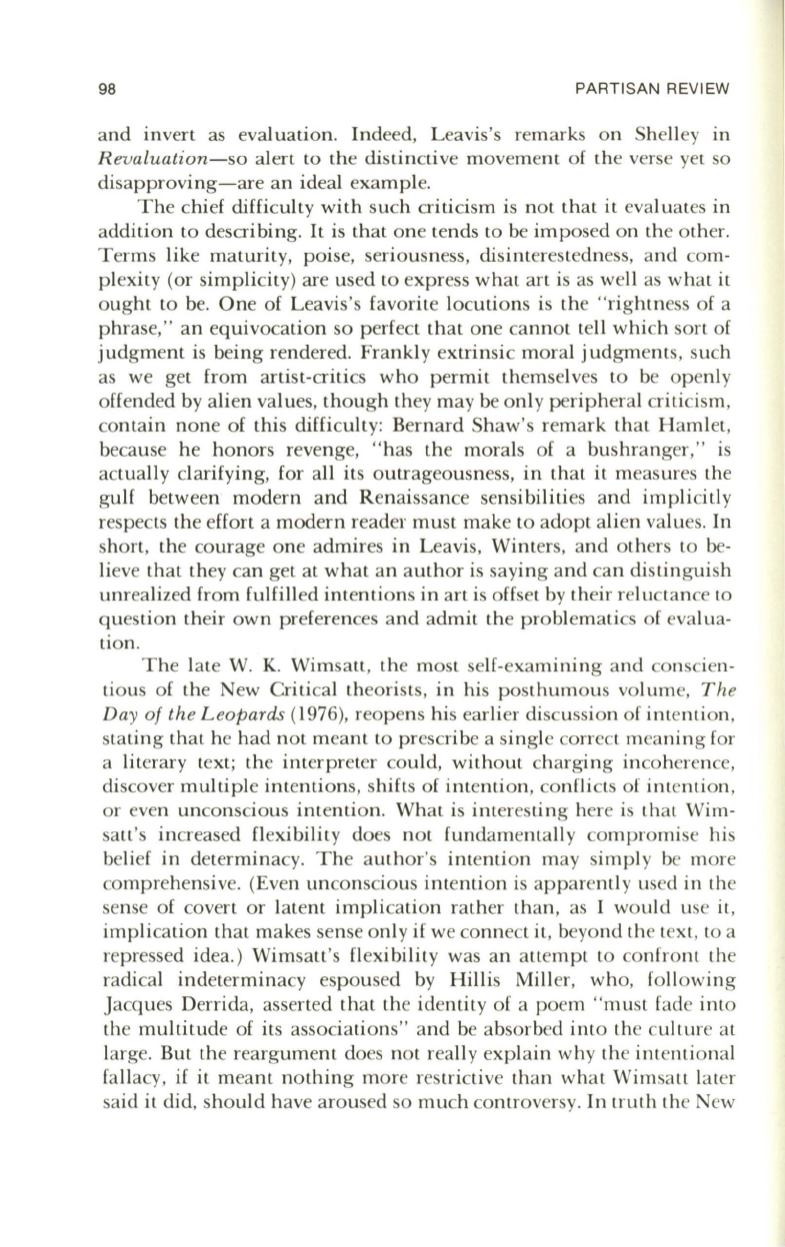
98
PARTISAN REVIEW
and invert as evaluation. Indeed, Leavis's remarks on Shelley in
Revaluation-so
alert
to
the distinctive movement of the verse yet so
disapproving-are an ideal example.
The chief difficulty with such criticism is not that it evaluates in
addition to describing.
It
is that one tends to be imposed on the other.
Terms like maturity, poise, seriousness, disinterestedness, and com–
plexity (or simplicity) are used
to
express what art is as well as what it
ought to be. One of Leavis's favorite locutions is the "rightness of a
phrase," an equivocation so perfect that one cannot tell which sort of
judgment is being rendered. Frankly extrinsic moral judgments, such
as we get from artist-critics who permit themselves to be openly
offended by alien values, though they may be only peripheral criticism,
contain none of this difficulty: Bernard Shaw's remark that Hamlet,
because he honors revenge, "has the morals of a bushranger," is
actually clarifying, for all its outrageousness, in that it measures the
gulf between modern and Renaissance sensibilities and implicitly
respects the effort a modern reader must make to adopt alien values.
In
short, the courage one admires in Leavis, Winters, and others to
be–
lieve that they can get at what an author is saying and can distinguish
unrealized from fulfilled intentions in art is offset by their reluctance to
question their own preferences and admit the problematics of evalua–
tion.
The late W.
K.
Wimsatt, the most self-examining and conscien–
tious of the New Critical theorists, in his posthumous volume,
The
Day of the Leopards
(1976), reopens his earlier discussion of intention,
stating that he had not meant to prescribe a single correct meaning for
a literary text; the interpreter cou ld, without charging incoherence,
discover multiple intentions, shifts of intention, conflicts of intention,
or even unconscious intention. What is interesting here is that Wim–
satt's increased flexibility does not fundamentally compromise his
belief in determinacy. The author's intention may simply be more
comprehensive. (Even unconscious intention is apparently used in the
sense of covert or latent implication rather than, as I would use it,
implication that makes sense only if we connect it, beyond the text, to a
repressed idea.) Wimsatt's flexibility was an attempt to confront the
radical indeterminacy espoused by Hillis Miller, who, following
Jacques Derrida, asserted that the identity of a poem "must fade into
the multitude of its associations" and be absorbed into the culture at
large. But the reargument does not really explain why the intentional
fallacy, if it meant nothing more restrictive than what Wimsatt later
said it did, should have aroused so much controversy.
In
truth the New


